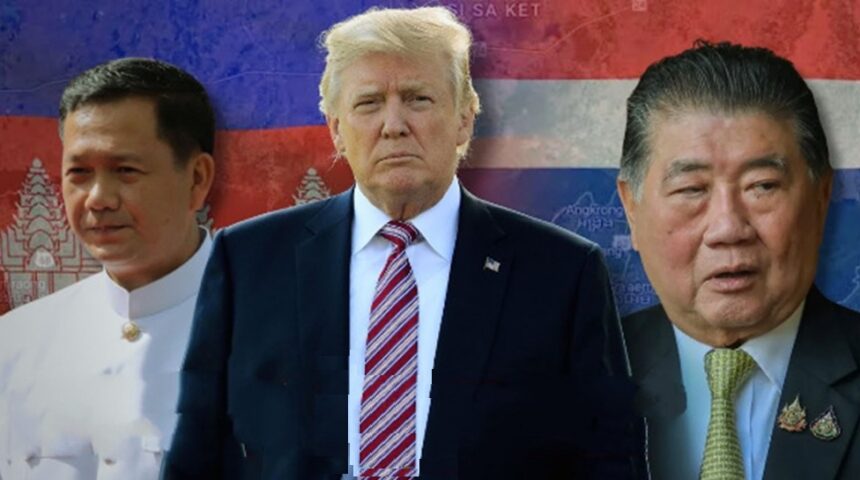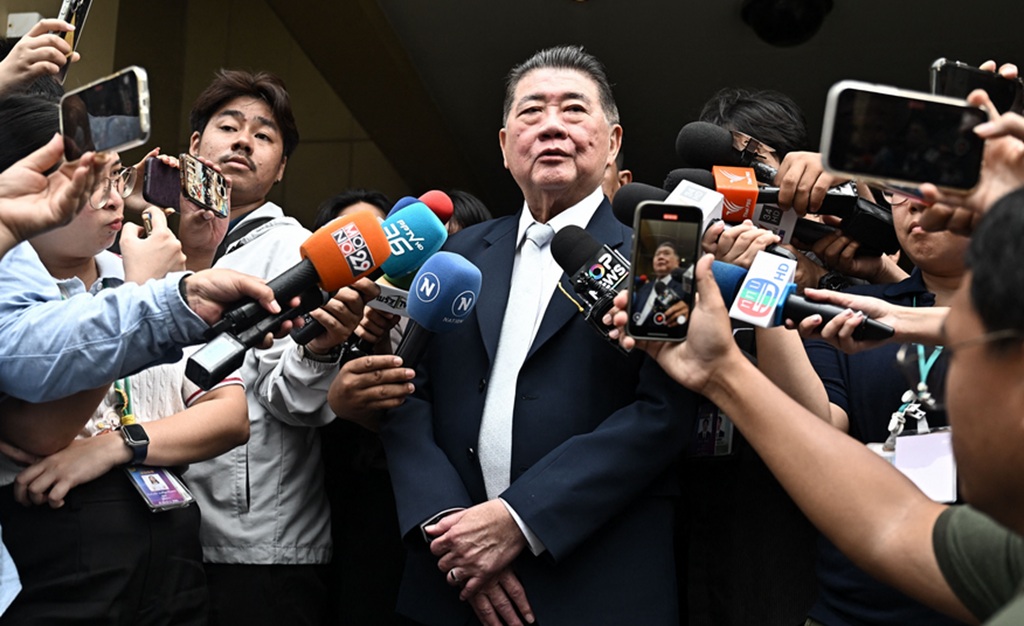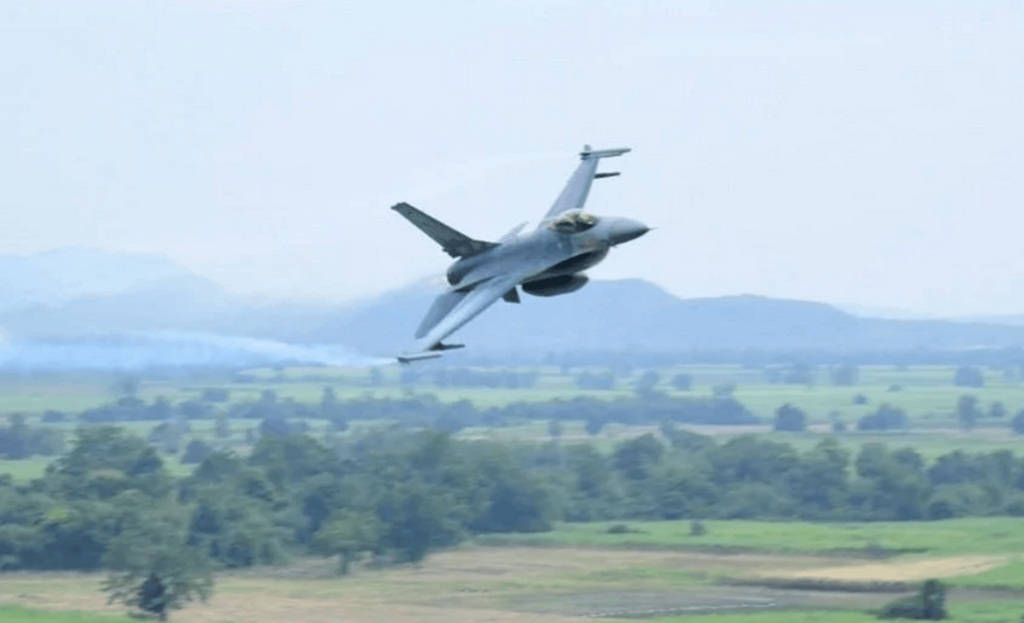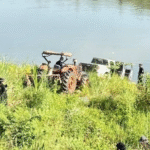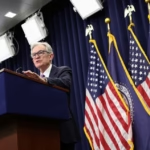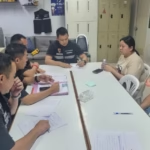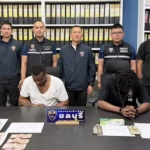BANGKOK – U.S. President Donald Trump has intervened in the Cambodia-Thailand border conflict, urging both leaders to halt the fighting, emphasizing that the U.S. would not proceed with trade deals with either country until the conflict ceased.
Trump also noted that both leaders agreed to meet immediately to work out a ceasefire, saying, “Both Parties are looking for an immediate Ceasefire and Peace,” and expressed hope that they would “get along for many years to come.”
Trump’s intervention led to an agreement for both leaders to meet in Kuala Lumpur, Malaysia, on July 28, 2025, at 3 p.m. local time, hosted by Malaysian Prime Minister Anwar Ibrahim, to discuss a ceasefire.
Cambodian Prime Minister Hun Manet expressed support for Trump’s call for an “immediate and unconditional ceasefire,” and instructed his foreign minister, Prak Sokhonn, to coordinate with U.S. Secretary of State Marco Rubio to facilitate talks with Thailand.
Thailand’s Acting Prime Minister Phumtham Wechayachai responded cautiously, stating that Thailand “agrees in principle to have a ceasefire in place” but emphasized the need for “sincere intention from the Cambodian side.”
Thailand accused Cambodia of initiating attacks, including artillery fire into Thai provinces like Surin and Trat, and insisted that Cambodia must suspend hostilities first.
Thailand’s PM Agrees in Principle
Mr Phumtham said he has updated US President Donald Trump on Thailand’s position regarding possible ceasefire discussions. He said Thailand is open to talks, but only if Cambodia shows it will keep its promises and pull back both its soldiers and heavy weapons from the border, so they no longer put Thai people at risk.
He also shared with President Trump the toll the fighting has taken. So far, 13 Thai civilians have died, more than 50 have been injured, and close to 130,000 people have had to leave their homes. Phumtham pointed out that Cambodia has suggested ceasefires before and then broken them.
At the same time, Deputy Defence Minister General Nattaphon Nakpanich accused Cambodia of not being honest. He said Cambodia had just agreed with President Trump to a ceasefire, but soon after, it started firing on Thai civilians in Surin province early that morning.
According to General Nattaphon, this is the second time Cambodia has gone back on its word about a ceasefire. The first was on June 8, when Cambodia promised to pull its troops from the Phaya Sattaban tree area, a natural border marker, but instead planted anti-personnel mines.
General Nattaphon admits it was a mistake to expect Cambodia to follow international rules such as the Ottawa Convention against landmines and the Geneva Convention. He explained to the press that soon after Cambodia promised to stop fighting, around 2 am, Cambodian forces shelled Thai civilian areas in Surin with rockets and artillery.
Fighter Jets Take Our Artillery
In response, the Royal Thai Air Force sent two Gripen and two F-16 jets to strike Cambodian rocket and artillery bases near the ancient Ta Kwai and Ta Muen Thom temples in Surin.
The Second Army Region raised the alarm in several north-eastern provinces over the risk from Cambodia’s PHL-03 long-range rockets. It advised people to stay calm and listen for official updates.
The army named several areas under threat, including Ubon Ratchathani, Surin, Si Sa Ket, Buri Ram, Maha Chanachai, Kor Wang in Yasothon, and parts of Maha Sarakham and Nakhon Ratchasima, all within reach of Cambodia’s rocket systems.
Colonel Richa Suksuvanon, the army’s deputy spokesperson, reassured the public that air defence measures are in place to deal with the rockets and urged everyone not to panic.
The ongoing conflict between Cambodia and Thailand, which escalated on July 24, 2025, has resulted in 20 deaths (13 civilians, including an 8-year-old boy and a 15-year-old) and 7 soldiers, 59 injuries (30 civilians and 29 soldiers) in Thailand. While Cambodia has reported 13 deaths, 8 civilians and 5 soldiers, including Maj Gen Duong Somneang, 70 injured (50 civilians and more than 20 soldiers).
Over 200,000 people have been displaced, approximately 138,000 to 150,000 civilians evacuated from border regions, with over 300 evacuation centers opened in Thailand. In Cambodia, around 35,000 to 38,000 civilians were displaced, primarily from Oddar Meanchey province.
Related News:
Over 150,000 Displaced, 33 Dead in Thailand-Cambodia Border Dispute




